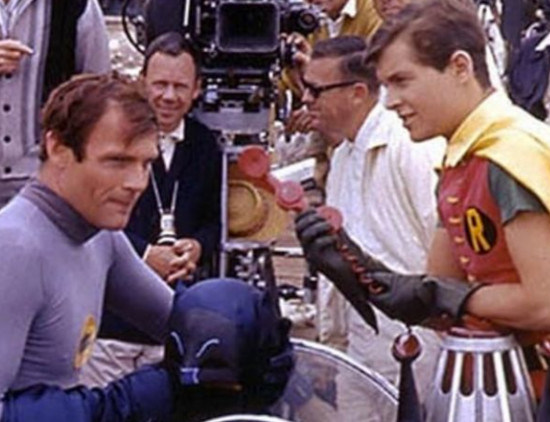I'm more than happy to have provided the jumping off point for your "Bat-motography" discussion (wow that's hard to type let alone
say KUDOS!). The look and feel of the show is the all important third leg of the stool that is so often taken for granted or has it's significance sidelined by the performances and writing. As much the article gets a little "inside baseball" for some, for me personally as a professional photographer, so it's really nice to hear others delving into the visual language of the show that made such a huge impression on me. An enjoyable episode overall, thank you.
Picking up on a couple of loose ends - Post-pilot (and after the Batcave was moved to Desilu Culver from Fox) many of the Batcave interior walls were embellished with mostly blue and purple gelled lighting. Before the movie's additional Bat-bucks were jingling in Dozier's trouser pocket, the Batcave didn't actually have a rear wall. Instead, behind the Atomic Pile hung a large black curtain that gave the illusion of fading into darkness. As Season One progresses, eventually two floor postioned up-lighters beamed bands of red light diagonally to create some kind of interest in the otherwise pitch black fall-off. As seen below in
"Batman Sets The Pace"...
From the movie onwards the lighting in the Batcave becomes higher-key overall in order to "put the money on the screen", aka, we finally paid for a rear wall and you're going to know about it. Creating a feature length movie to be shown in theaters also arguably placed an honus on making already lavish sets like the Batcave even more vivid and enthralling for the big screen audience. The shot below from the S2 opener demonstrates this nicely. Note that as well as the rear-cave-wall, they had now also gelled the lights that accentuate the pillars of the Atomic Pile too...

The other comment I want to circle back to is the remark about "Parallel" lighting banks. Banks of parallel lights allow production to jump quickly between shot-reverse-shot camera positions whilst maintaining the equivalent three-point (key, fill, rim-light) setups without having to reset or move lights between takes, instead one set are dimmed/turned off and the parallel set turned on, so as not to create spill. This is especially important within a hectic TV workflow when time is of the essence, especially in standing sets like the Batcave where similar framings and interactions happen every week.



